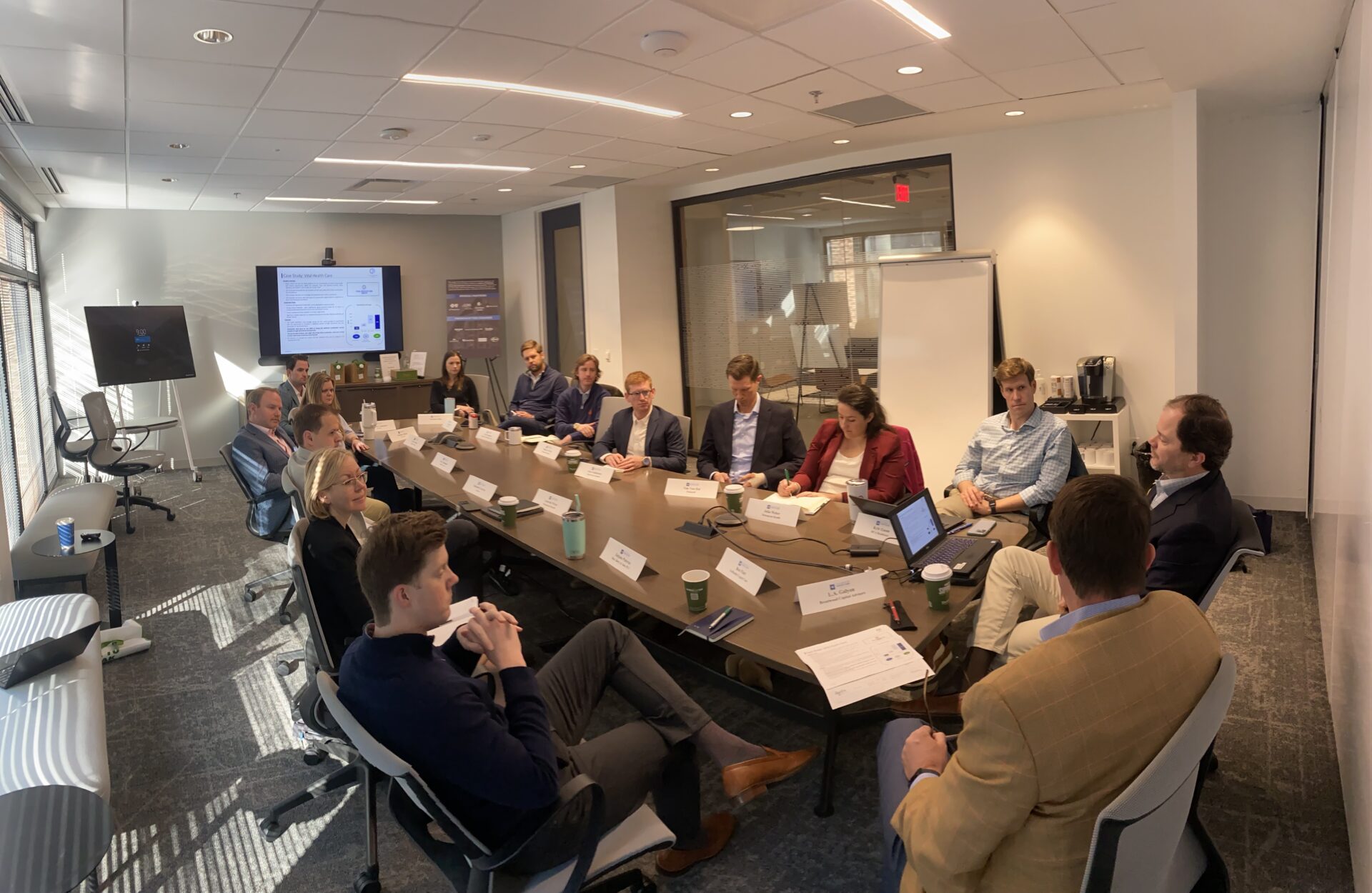Aligning Teams and Capital: Key Insights from Brian Freeman and John Davis on Driving Value in Healthcare
Leadership Health Care (LHC), a Nashville Health Care Council program for emerging leaders, Cohorts provide the participants an opportunity to engage in a peer mentoring program facilitated by an experienced healthcare executive. Throughout six cohort sessions, participants discuss substantive topics around a common focus area to enhance their knowledge and leadership skills.
Aligning Teams and Capital: Key Insights from Brian Freeman and John Davis on Driving Value in Healthcare
At the core of driving value in any organization lies the ability to align teams, capitalize on resources, and ensure that decisions are grounded in solid financial strategy. Brian Freeman, Founder and CEO at Mployer, and John Davis, COO/CFO at EspriGas, both key players in the evolving healthcare landscape, shared their focus on two critical areas for success: aligning teams and managing capital effectively.
Team Alignment: "Everyone Rowing in the Same Direction"
Freeman and Davis acknowledged the challenge of maintaining unity and clarity as companies grow. With teams expanding rapidly, there is a natural period of adjustment as new faces join and processes are refined. “It’s crucial to ensure that leadership at all levels is rowing in the same direction” stated Freeman. This isn’t just about managing growth, but ensuring that new leaders, departments, and teams understand their roles and how they contribute to broader organizational goals. Smoother transitions lead to better performance, both internally and externally. Creating a harmonious environment is vital for scaling.
“It’s crucial to ensure that leadership at all levels is rowing in the same direction” - Brian Freeman, Founder and CEO at Mployer.
Capital Management: Allocating Resources for Sustainable Growth
The second major focus for Freeman is ensuring the right capital is available to fund the company’s plans. Both emphasize the power of strong capital allocation and its impact on decision-making. Freeman’s experience with capital raises involved sifting through numerous details about customer acquisition and lifetime value, relying on intuition alongside the numbers to determine the best path forward. Freeman shared “It’s about balancing quantitative data with gut feeling, trusting the judgment of key decision-makers, and proceeding with a clear direction.”
For companies, particularly in the healthcare sector, the decision-making process often comes down to balancing options like acquisition, starting from scratch, or partnering. Each approach has its own cost and risk structure. Acquisitions can be expensive, starting from scratch requires time and higher risk, while partnerships—such as joint ventures—offer a balance of cost efficiency and speed, especially in the early stages.
Capital Raising and Pivots in Strategy
Both Freeman and Davis discussed the hurdles of raising capital and the evolving nature of their business models. Freeman acknowledged the challenge of raising capital from investors, recognizing the importance of not just presenting a solid business plan, but also aligning personal intuition with investor expectations. Raising capital often requires a combination of data, relationships, and trust in the decision-making process.
Davis shared insights into their pivot from a product initially designed for employer engagement to focusing on analytics—a shift born out of realizing the limitations of the initial model. While their employer platform hit a ceiling, the analytics side of the business took off, highlighting the necessity of adaptability and responsiveness to market needs.
Making Capital Decisions: The Art and Science of Investment
The balance between the art and science of investment decisions is key. Freeman and Davis both emphasized that while financial models are necessary to justify investments, intuition and experience play crucial roles in decision-making. Investments in initiatives like transfer centers, or pivots in business strategy, often start with a gut feel supported by financial data. These strategic choices, while speculative at first, prove their value as the company grows.
Navigating Investment Conversations: Balancing Openness and Efficiency
A key part of Brian's capital journey has been navigating business conversations with openness and flexibility. Early in the process, enthusiasm was high—investors showed strong interest, and it seemed they were oversubscribed. Over time, he came to appreciate the value of leaving room for possibility. Rather than receiving firm yes or no responses, discussions often remained open-ended, creating space for future opportunities and partnerships as circumstances evolved.
In contrast, Brian recalls encountering a more direct approach to fundraising: “I remember John saying, 'Try to get to a no as fast as possible,' and that just being so novel to me when you all were raising money.” This strategy, he found, was refreshing because it eliminated ambiguity, allowing him to move forward more quickly and efficiently.
Both Freeman and Davis emphasize the importance of trust—both in people and in the processes that guide decision-making. Their stories about navigating growth, making capital decisions, and learning to trust their instincts offer valuable lessons for leaders in healthcare and beyond. Whether managing rapid expansion, raising capital, or pivoting strategy, their approach is rooted in aligning teams, making informed decisions, and maintaining flexibility in the face of challenges.
The Next Generation of Healthcare Leaders
Leadership Health Care’s mission is to cultivate talented healthcare professionals into the industry leaders of tomorrow. LHC aims to provide young professionals with ongoing opportunities to develop their knowledge of the healthcare industry through educational events and networking opportunities. Fill out this form to learn more about LHC.


